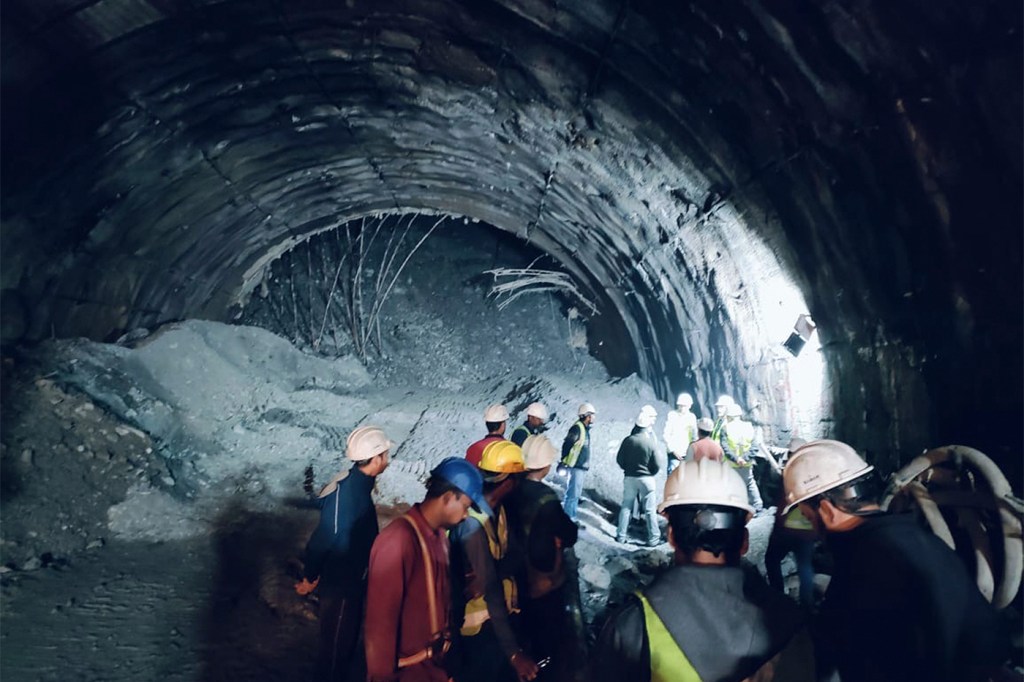Tunnel collapse in India: How are rescuers going to get 40 construction workers out safely?

A partial tunnel collapse in India has rescuers scrambling to rescue 40 construction workers trapped under the debris.
As of Tuesday, all 40 laborers were alive — a remarkable development given the dangerous conditions posed by such a disaster, and the risks involved in getting the men out, says Daniel Aldrich, a Northeastern professor and director of the university’s Security and Resilience Program and co-director at the Global Resilience Institute.
The collapse, located in the state of Uttarakhand, underscores just how precarious conditions on job sites are in India — a country of 1.4 billion people — where regulatory oversight can’t keep pace with the rate of development, Aldrich says.
“We always say that an accident is never a single moment, although we often see it as a single moment,” Aldrich says. “An accident is a series of mistakes.”
India’s construction industry has experienced considerable growth in recent years — but at a high cost: a rate of roughly 38 fatalities per day, according to one analysis from a construction management firm. According to Al Jazeera, some 200 people — a majority of them construction workers — died following flash floods in Uttarakhand caused by a glacier breaking away. Experts then pointed to the country’s unbridled development as partly to blame in the disaster.
Aldrich says that along with lax regulatory oversight, pressure from investors can make for tighter project deadlines, which can make it harder to prioritize worker safety on project sites.
“It’s entirely possible that a number of the workers on this project were recruited with little training, almost no safety equipment and with few instructions about what to do,” Aldrich, who has studied disaster recovery efforts worldwide, says.
Aldrich adds that “the overall oversight in the construction industry in India is much weaker than in other developed countries.”
Officials appear confident in their rescue efforts, stating this week that they hope to get the men out using a “900 mm pipe.”
But extricating the workers depends on a number of factors.
“It really depends on how far in and deep they are,” Aldrich says. “In many cases, they may have to drill a separate shaft to get them out, particularly if the main exit is collapsed. Or they could stabilize the debris on site, and then get them out through the main exit by removing that debris.”
Aldrich says boring into the debris to create an escape shaft would require engineering expertise and specialized equipment.
On the upside, Aldrich notes that construction planners may have been able to stave off disastrous loss of life by putting safety measures in place on the job site. Exactly how the workers managed so far to avoid further injury is unknown.
“Is it through some combination of luck and agency” that they survived? He asks. “We simply don’t know enough.”
“This is a very challenging job because as we clear debris more debris is falling from the ceiling, so we are also trying to stop that by using cement,” Mohsen Shahidi, a senior National Disaster Response Force officer, said on Sunday.
“In the broader environment, in which cutting costs and efficacy are the most important elements — not safety and resilience — this collapse may be a result of some combination of an underdeveloped regulatory environment, along with the lack of oversight and underskilled human resources,” Aldrich says. “Given this, you’re much more likely to have an accident like this.”
Tanner Stening is an assistant news editor at Northeastern Global News. Email him at t.stening@northeastern.edu. Follow him on X/Twitter @tstening90.







